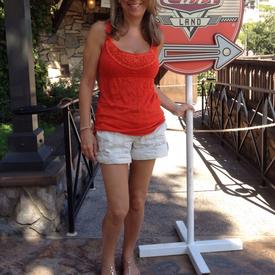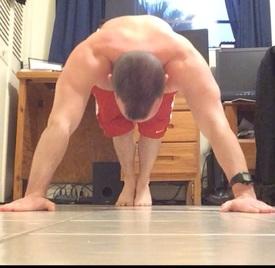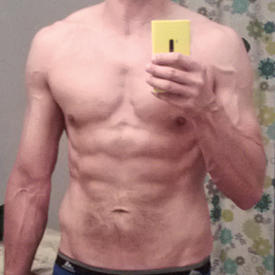Not into weight lifting. Is it really necessary at all?
Options
Replies
-
I just wanted to take a minute to thank those of you that took the time to read my post and productively respond in a thoughtful manner. I think it was a good and enlightening discussion.
I 100% acknowledge and agree that maintaining muscle as we age, especially for women, is crucial to health. Therefore, resistance or weight bearing exercises are essential. Cardio alone cannot achieve this. The question I was trying to figure out is whether weight lifting specifically is necessary to accomplish the goal, or other activities were sufficient.
I think the posts that hit closest and made sense to me were those that said essentially, no it's not necessary per se, but it's efficient, will get you there quicker, and is fine and useful to incorporate alongside your other routine.
I have decided to do that. I downloaded the new rules of weightlifting book this morning, as I've seen it highly recommended, and I plan to schedule an appointment with a pt at my gym. I'm going to try to incorporate a very light routine that I can add on to what I already do with one day at the gym, and one day at home (I already own a home weight set).
Thank you again to those of you that took the time to give your thought out responses.
Have a good day all! :-)
Hi
Can I suggest maybe getting help with reviewing form on lifts from a sports-minded physical therapist, rather than a personal trainer? So many ways for little things to go wrong, especially for people over a certain age, & especially if there is a history of injury.
Best of luck
Thank you. I agree that it is of extreme importance to find someone who knows what they are doing. Of course, anyone can injure you. I had two physical therapists exacerbate existing injuries they were supposed to be helping me to heal. Truthfully, I trust very few people. My pilates trainer is one of the only trainers I trust. She owns her studio and really knows her stuff. She is amazing. But in general, I'm suspect of most trainers and physical therapists. The guy I'm going to make an appointment with has been the director of my gym for years and probably knows enough not to hurt me. But more importantly, will comply with my wishes to simply take it slow and teach me proper form.
With that said I think it's worth saying three things here that I think are important: 1) know stuff on your own; 2) take things really, really slow until you know it on your own and get the form down right, and 3) learn to say no. N.O., when someone is telling you to do something that doesn't feel right. And if they then pressure or push you, learn to say buh-bye.
Completely agree on all counts!
Given a history of injuries and different goals, my thought is, maybe an off-the-shelf training program isn't for you. (Entirely projecting here, this is how I'm thinking about how I will approach lifting when the time comes.) That program is mostly oriented towards retaining muscle for the purposes of showing it off + fat loss (hence lowish calories & intervals, metabolic exercises to maximize calorie burn, etc). The weekly frequency & prescribed rep ranges might not work with your recovery, and if you are goal-oriented as you say, you might (as i would) be tempted to push it regardless of awareness of your issues.
For reference, here's the ACSM's 2011 position on exercise for the general population: http://journals.lww.com/acsm-msse/Fulltext/2011/07000/Quantity_and_Quality_of_Exercise_for_Developing.26.aspx
and the 2009 one just on resistance:
http://journals.lww.com/acsm-msse/pages/articleviewer.aspx?year=2009&issue=03000&article=00026&type=fulltext
and a handier guide for beginners:
http://www.acsm.org/access-public-information/articles/2012/01/13/the-basics-of-starting-and-progressing-a-strength-training-program .
Thank you. That was very interesting. I especially liked acsm's position on neuromotor exercises. I have long thought that most people would greatly benefit from incorporating tai chi in their fitness routine for overall health (including mental) benefits. It is interesting that this has become an official recommendation to include this, or a similar type of routine.0 -
Honestly, given a choice between running and weight lifting, I would choose running. However, I had to give up running a few years ago because I overtrained and didn't cross train and my knees were killing me. Six months ago, I started a variety of exercise classes including Zumba, Kickboxing, and weight training. In June, I cautiously started to run again and I found my knees were fine! On August 10th, I ran my first official 5k and have run several 5ks since then. So, I'm doing a lot of running but I'm also making sure I mix in weight training. I think doing a variety of exercises in general is good for you.0
-
I just wanted to take a minute to thank those of you that took the time to read my post and productively respond in a thoughtful manner. I think it was a good and enlightening discussion.
I 100% acknowledge and agree that maintaining muscle as we age, especially for women, is crucial to health. Therefore, resistance or weight bearing exercises are essential. Cardio alone cannot achieve this. The question I was trying to figure out is whether weight lifting specifically is necessary to accomplish the goal, or other activities were sufficient.
I think the posts that hit closest and made sense to me were those that said essentially, no it's not necessary per se, but it's efficient, will get you there quicker, and is fine and useful to incorporate alongside your other routine.
I have decided to do that. I downloaded the new rules of weightlifting book this morning, as I've seen it highly recommended, and I plan to schedule an appointment with a pt at my gym. I'm going to try to incorporate a very light routine that I can add on to what I already do with one day at the gym, and one day at home (I already own a home weight set).
Thank you again to those of you that took the time to give your thought out responses.
Have a good day all! :-)
Classy lady
And like I said, while a lot of the posters on here are going to encourage you to lift heavier (**** I would too), I think so long as you can do bodyweight exercises (the full range of motion, not these half-rep things lots of girls pass off as full pushups) and do them for a few sets with 10 reps or so, you should be fine from a health perspective. Adding weight would just be better.
Just don't cheat yourself. Work you way up to something where you're actually doing work. If you're not even breaking a sweat, you're probably just wasting your time and shouldn't be doing them at all.0 -
Thank you. That was very interesting. I especially liked acsm's position on neuromotor exercises. I have long thought that most people would greatly benefit from incorporating tai chi in their fitness routine for overall health (including mental) benefits. It is interesting that this has become an official recommendation to include this, or a similar type of routine.
No problem at all, hope it helped.
I think many people overlook balance, coordination, proprioception, etc. - I know I have in the past (even now), and intend to address it asap.0 -
I used to lift (lightly) in my 20's. I went around with a man who was really into it, and he taught me how. But I don't think I ever really liked it that much.
As I get older, I've heard it's very important for a woman to do it to maintain muscle. But frankly, I like it even less now. I prefer pilates, yoga, or whatever.
But here is my question that I keep coming back to for those that think it's necessary and the best form of exercise for maintaining muscle. And that it has to be weights, as opposed to using your own body for the exercise, like you do for the most part in pilates (non reformer) and yoga. How do you explain people that don't lift, but are very muscular?
The first example that immediately comes to mind is a ballerina and her legs. They don't lift weights, other than using their body's weight to carry them. My understanding is they do cross train with pilates, yoga, etc., but no weight training. Yet, they are as muscular as can be in their legs.
So, is it really necessary?
Ballarinas have extremely LOW bodyfat which is why you see the muscle. Even if its smaller muslces you will see them because they are not masked and hidden by fat.
If you want to burn fat you need to do weight training and eat healthy with some cardio. then you see the muscle0 -
Have you tried resistance training with bands? Kinda fun!0
-
Did you get New Rules of Lifting or New Rules of Lifting for Women? I ask because they are different routines and the books are written with very different tones. NROLFW does NOT focus on lifting to failure, and while both books are written with a humorous tone, NROL is definitely a "guy book" in terms of the writing and NROLFW is written in a way that is definitely geared towards women. Either sex could do either routine, but if you're unhappy with NROL, I would suggest picking up NROLFW. The overall writing will probably be more appealing to you, and I think the Stage 1 routines are more beginner friendly.
well she says it was for women- but ultimately she can do either- technically you would train a man the same as you would train a woman- so there should not honestly be THAT much of a difference.
Having not read either of those books I can't truly speak to them and how they are geared- but for form/and progression? you would train a man as a woman. The biggest difference is typically recovery time- a woman's is much greater than a man's and can usually fit more into a work out than a man. My friend regularly out lifts me- and we are both lifting to failure- but I am always ready sooner... and more willing to do more work after the "heavy" lift. (say deadlifts- I'm happy to max out with a super set of row/pull ups where as he is more willing to call it a day LOL)
it is what it is.
good choice OP- keep up with it and see how you like it.0 -
If you want to burn fat you need to do weight training and eat healthy with some cardio. then you see the muscle
The only part of that comment that is a definite "NEED" is to eat healthy and eat at a healthy deficit if your goal is weight loss. Past that, you do not NEED to do any cardio or weight lifting. Now with that being said, if you are concerned with your overall health and fitness then you definitely SHOULD do some kind of exercise because there are considerable health benefits.
Remember there is a big difference between NEED, WANT, and SHOULD.0 -
I'm late to the party but gymnasts don't lift. I recall an interview with a gymnastics coach who said it's down to leverage. I guess by this he means that if you make the body continually challenging to lift, you will build muscle. With this in mind, the likes of yoga will suffice providing you don't stick to the basic stuff. As you find you're getting better at yoga, you have to look for more advanced exercises. Downward dog too easy? Time to do handstands. Plank too easy? Hold a planche. Planche too easy? Planche press ups. (I don't know the yoga names - these are gymnastics terms.)0
-
It's a good idea if you plan on living past 65, and want to look and feel as young as possible. By lifting, I really mean strength training, with weights or body weight. You need a more extensive knowledge of exercises to make a body weight program work as well as a program of weights though, so if you don't enjoy it, you might prefer the weights.0
-
If you want to burn fat you need to do weight training and eat healthy with some cardio. then you see the muscle
The only part of that comment that is a definite "NEED" is to eat healthy and eat at a healthy deficit if your goal is weight loss. Past that, you do not NEED to do any cardio or weight lifting. Now with that being said, if you are concerned with your overall health and fitness then you definitely SHOULD do some kind of exercise because there are considerable health benefits.
Remember there is a big difference between NEED, WANT, and SHOULD.
I would argue that if your goal is weight loss, then you only "NEED" to eat at a deficit. The "healthy" part is not necessary.0 -
I can't do weight lifting due to musculoskeletal issues in my neck, so I certainly hope it's not necessary.
Do as much cardio as you can, consider resistance training....there are alternative ways to build muscle.0 -
It's a good idea if you plan on living past 65, and want to look and feel as young as possible. By lifting, I really mean strength training, with weights or body weight. You need a more extensive knowledge of exercises to make a body weight program work as well as a program of weights though, so if you don't enjoy it, you might prefer the weights.
Very true. It's easier just to keep adding weights to a barbell and doing the big 3 than trying to figure out the next exercise. Easier if you have a gymnastics coach or a yogi (of the non-bear variety) to hand. Also, there's only so far you can go with your leg development unless you start getting people to sit on your back while you do Bulgarian squats. :laugh:0 -
But for the average person (let alone the demographic of the OP) it's pointless to force traditional weight lifting down their throat when body weight moves can accomplish the same thing.
If the OP has tried lifting and truly doesn't like it, then I agree. But, average people who never lifted before can learn it and like it, especially when educated about the benefits. Pointing to myself as that average person who never really thought of it as an option, until joining this forum.
"Traditional" bodyweight moves can not accomplish the same thing. In order to take it beyond the beginner /early intermediate level (which is relatively easy to achieve when you don't have obesity or pre-existing injury working against you), you need to progress to a degree of skills work in your bodyweight training that takes it far beyond traditional, basic bodyweight moves such as pushups, bodyweight squats & lunges, and chinups.
Look at the following exercises: Pistol squats. Handstand pushups. Muscle-ups. Dragon flags. One arm pushups. Suspended ring dips.
Unless you plan on progressing with your bodyweight training to a point where you can perform these exercises, then no. You can not make the claim that bodyweight can replace weights. Because limiting yourself to more rudimentary bodyweight exercises means lack of progressive loading. And progressive loading is key to results.
As you grow stronger you need to find a way to increase the difficulty of the exercise. With weights this is as simple as increasing the weight. With bodyweight, you need to work toward more balance/strength intensive unilateral variations of said exercises. Personally I am a huge proponent of this sort of progression and think that it is arguably superior to weight training. But it's not for everyone and can be FAR more injury prone than conventional weight training when performed by people with ANY pre-existing injury concerns. And no, simply increasing the rep count doesn't cut it.
If you can't find a way of making the work harder as you grow stronger without simply increasing the rep count, then your argument about bodyweight training being sufficient is invalid. And "consumer-oriented" forms of yoga and pilates (the kind being packaged on DVDs and sold to the general public) do not cut the mustard.
Anyway, if you're serious about the idea of using bodyweight training as a complete replacement for weights, I stand by what I said before: Look to gymnasts and how they train. If you have no interest in taking it that far (or close to it) then I've got news for you: You've already proven yourself wrong and don't know it.
Awesome post. Spot on.
I strength train, but I do not lift weights. If I do use external weight, I add it to myself to make myself heavier.
I couldn't tell you what I squat or overhead press, but I can bang out pistol squats and handstand pushups like nobodies business; one arm pushups have gotten too easy to be useful as a strength exercise (though they are a great plyometric exercise).0 -
Also, there's only so far you can go with your leg development unless you start getting people to sit on your back while you do Bulgarian squats. :laugh:
Nonsense.
Lock your hands together behind your lower back and do a pistol squat that way. Or hold on to a small weight. The position it forces your weight into (assuming you have the mobility) greatly magnifies the force required for the exercise.
Do a side kick as high as you can. Hold it, leg straight as possible. Squat a2g while holding the kick.
Grab a solid sturdy object that sits about 6"-8" high, stand on it with one foot, holding your other foot behind your back with both arms (much like a quad stretch). Do a squat, all the way down to knee contact, and back up. (called a deficit shrimp squat)
Knee down, roll up a towel and place it below your knees, and rig a way to hold your feet, preferrably only limiting upward lift of the heel (not allowing pressing with the foot). Curl yourself, no hand assist, keeping yourself as straight as possible throughout. (called a natural hamstring curl or ghetto glute ham raise)(If trying this for the first time, use hand assist else you will break your nose.)
Sprint up a steep hill with 100% effort (10-15 sec run), timing your runs (trying to always beat your PR). Walk back down and allow for full recovery before running again. Treat it exactly as you would any other leg strength exercise with regards to set timing and set numbers.0 -
Your time can be used much more efficiently to achieve the body you desire by combining short burst interval workouts with strategically designed supersets of dumbbell and bodyweight exercises. It only takes three, 45-minute sessions a week to achieve dramatic results.0
Categories
- All Categories
- 1.4M Health, Wellness and Goals
- 392.1K Introduce Yourself
- 43.6K Getting Started
- 259.9K Health and Weight Loss
- 175.7K Food and Nutrition
- 47.4K Recipes
- 232.4K Fitness and Exercise
- 403 Sleep, Mindfulness and Overall Wellness
- 6.4K Goal: Maintaining Weight
- 8.5K Goal: Gaining Weight and Body Building
- 152.8K Motivation and Support
- 7.9K Challenges
- 1.3K Debate Club
- 96.3K Chit-Chat
- 2.5K Fun and Games
- 3.4K MyFitnessPal Information
- 23 News and Announcements
- 1K Feature Suggestions and Ideas
- 2.4K MyFitnessPal Tech Support Questions












